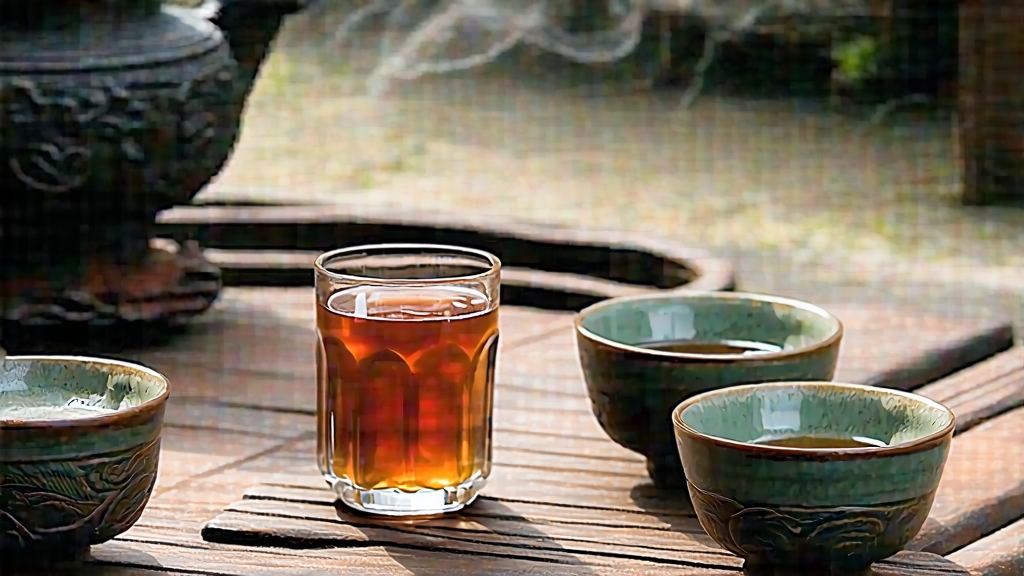
If oolong is the hyphen that links China’s green freshness to black depth, then Phoenix Dancong is the exclamation mark that finishes the sentence with fragrance. Hailing from the granite spires of Phoenix Mountain (Fenghuang Shan) in northern Guangdong, this leaf has been seducing tea caravans, scholars and emperors since the Song dynasty, and today it is quietly conquing the cupping tables of London, Melbourne and San Francisco. Yet outside the circles of serious tea hunters, Dancong—literally “single bush”—remains one of China’s best-kept aromatic secrets. This essay invites the international reader to travel, without leaving the kitchen, from the myth-veiled origin stories to the final shimmering sip, unpacking history, cultivar science, craft, brewing ritual and sensory lexicon along the way.
-
From Song dynasty tribute to post-modern cult object
Local chronicles record that in 900 CE a Song emperor, fleeing Jurchen cavalry, paused at Phoenix Mountain. Monks served him a tea so perfumed that he forgot the battle drums; the leaf was henceforth reserved for the palace and named “Song Zhong” —“planted in the Song.” Whether apocryphal or not, imperial demand created an early plantation network. By the Ming, clonal propagation was abandoned; each seed-grown tree mutated freely, giving rise to the hundreds of aromatic profiles for which Dancong is now worshipped. Republican-era merchants carried it down the Pearl River to Hong Kong and then to Southeast Asia, where it became the signature scent of Chaozhou diaspora teahouses. In the 1980s Japanese tea scientists identified its higher-than-average volatile aromatics, and the global specialty boom of the 2010s did the rest. -
Mountain, mist and mineral: the terroir
Phoenix Mountain rises abruptly from the subtropical lowlands to 1,498 m, intercepting monsoon clouds that deposit 2,100 mm of rain annually. Days are warm, nights are cool, and the granite-derived soils are so porous that roots must dive three metres for water, concentrating polyphenols and aromatic precursors. The indigenous honey-peach, orchid and pomelo trees exude volatiles that adhere to tea trichomes, adding a mysterious “mountain fruit” note impossible to replicate in low-elevation gardens. -
The cultivar galaxy: more than “one” Dancong
“Dancong” does not denote one flavour but a tasting matrix. Gardeners classify trees by aroma resemblance: Mi Lan Xiang (honey-orchid), Yu Lan Xiang (magnolia), Jiang Hua Xiang (ginger flower), Zhi Lan Xiang (gardenia), almond, peach, cinnamon, even “duck-shit” (Ya Shi Xiang) whose name hides a yam-sweet core. Each comes from a genetically distinct single bush; when a mother tree is 200–600 years old, cuttings are taken, but the new plant must still be grafted onto seedling rootstock to preserve terroir memory. Thus every batch is a micro-terroir within a village within a mountain. -
Craft: the eight labours that trap a flower inside a leaf
a. Plucking: only the middle three leaves plus a semi-mature bud are snapped between thumb and forefinger at 7–9 a.m. when dew has evaporated but sun is still soft.
b. Solar withering: leaves are laid on bamboo screens 70 cm above ground for 20 minutes; the mountain UV boosts floral aldehydes.
c. Indoor withering: moved onto water-permeable cement floors, they are gently turned every hour for 6–8 hours; moisture drops from 75 % to 62 %.
d. Shaking: the signature “green labour.” Forty kilograms of leaves are tossed in a 1.2 m diameter bamboo drum rotating at 15 rpm for 3 minutes, rested, then repeated 5–7 times overnight. Cell walls bruise, triggering enzymatic oxidation that will later translate into linalool and geraniol.
e. Oxidation: leaves rest in waist-high piles for 4 hours; edges turn russet while centres stay jade, the 30 % oxidation target that gives Dancong its green-oolong soul.
f. Kill